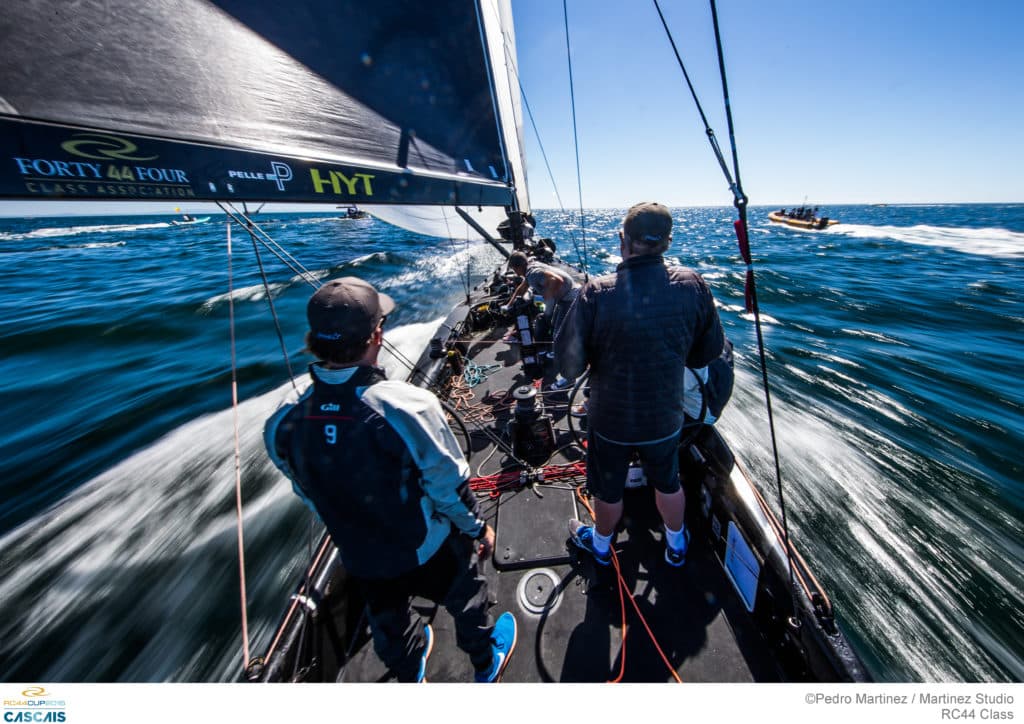
For years, I’ve viewed turning the top mark as a time to turn on the jets and really make some ground on the racecourse. Maybe this fervor came from a few outings as a kid with some teams that would “pass the sandwiches” after the kite goes up…or maybe it was sailing singlehanded boats where upwind differences were small, but downwind was when you made your money.
I have a system that travels well with any one-design or offshore team. It’s simple, and only involves constant communication between three primary players — spotter, trimmer and driver.
Most of the time, the spotter is the eyes-out-of the-boat person. It can be the tactician or someone designated to call puffs and waves. Before the top mark, this person starts their downwind dialog by communicating which side of the spinnaker set has more breeze and usually follows up with some simple compass feedback.
An example would be something like, “There’s stronger wind on a bear-away set, which also supports what the compass says, as we are seeing a 7-degree leftie.”
This simple feedback sets up the exit out of the top mark so you can then implement your bigger-picture downwind strategy. Once around the mark, the spotter then has eyes glued behind to call pressure and look beyond the racecourse for any bigger changes. They also help communicate lanes downwind to help keep air clean. This person really has the most important job of the three, and the more information passed, the better.
The trimmer has a huge role in downwind as well. Not only do they have a direct impact on speed through their trim of the spinnaker, but they also hold a key role in verifying and giving feedback to the spotter about whether the breeze they called actually hits the sails through increased trimming pressure.
Some common dialog would be:
Spotter: “Breeze in 5. Looks to be a good puff and a bit of a righty.”
Trimmer: “Got the breeze. Spinnaker is holding steady…not much change in wind direction.”
This dialog should be relatively constant. The more that the spotter says and recognizes, the easier it is for the trimmer to be prepared and give immediate feedback.
Now plug in the communication with the driver, which brings the dialog full circle:
Spotter: “Breeze in 5. Looks to be a good puff and a bit of a righty”.
Trimmer: “Got the breeze. Spinnaker is holding steady…not much change in wind direction.”
Driver: “I have come down 5 degrees in the puff…definitely a righty as we are tracking 245 now.”
The driver can give the final confirmation of angle and can continue to ask for dialog when there are moments of no change. From my perspective as a driver, I’m a little more aggressive in my calls for input, as I want to be sure that my teammates are on their toes. This helps keep everyone sharp.
Here’s another example:
Driver: “How’s your pressure?”
Trimmer: “Medium to light in the sheets”.
Spotter: “Small increase in 10. Looks to be a nice fill behind and to leeward.”
Driver: “If we lift off of 245, we’ll wait a few seconds and jibe”
Trimmer: “I have good pressure in the kite…increasing by the second.”
Spotter: “Solid fill for a while. It looks better to leeward.”
Driver: “We just lifted 5. Let’s jibe.”
The above dialog only happens when all parties are focused and working together. But when that happens, you’ll start seeing your results improve.
Read More: How To | Communication









